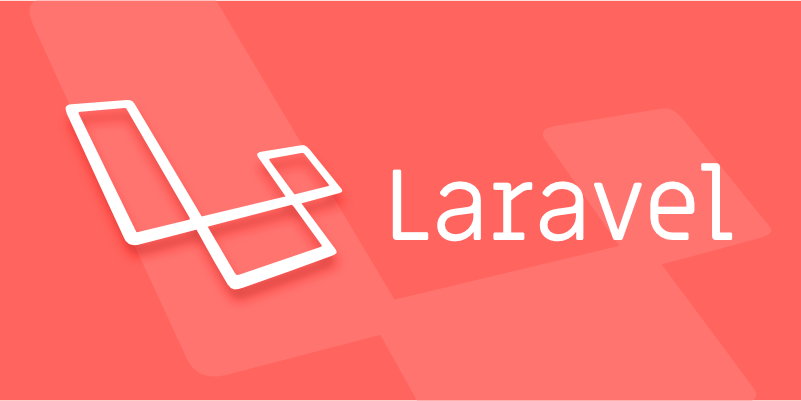Upgrading Laravel to the latest version requires caution. 1. Check the difference between the current version and the target version, confirm the upgrade path and read the Breaking Changes in the official document; 2. Be sure to back up the code and database before upgrading, so that it can quickly roll back if errors occur; 3. Modify the Laravel version number in composer.json and check whether other dependencies are compatible; 4. Run composer update and deal with possible PHP version, extension or package conflict issues; 5. Clean up the Laravel cache and regenerate the optimization file to ensure that the new functions are running normally; 6. Test core functions such as login, database reading and writing, queue tasks, API interfaces and third-party service docking, and complete the upgrade after verification by modules.

Updating Laravel to the latest version is actually not too difficult, but it requires careful operation, especially when the project is already online or has more dependencies. Laravel official generally provides a clear upgrade path, but when actually executing, you still need to make adjustments based on your own project situation.

Here are some steps and precautions you really need to know:
1. Check the difference between the current version and the target version
Before you start, confirm which version you are using now and the target version you want to upgrade to. You can view the current Laravel version through the following command:

php artisan --version
Then go to the Laravel official upgrade guide page to find all intermediate versions from your current version to the target version. For example, if you upgrade from 9 to 10, you have to first look at 9 -> 9.x, and then look at the upgrade instructions of 9.x -> 10.
Suggestion: There may be destructive changes between each major version, and these official documents will be written very clearly, don’t skip them!
2. Backup code and database
The most important step before upgrading is to backup .
- Make a compressed package for the entire project, or submit a "pre-upgrade" commit with Git.
- The database also needs to be backed up, especially the data from the production environment or test environment.
In case of errors during the upgrade process, it can roll back quickly and will not be in a hurry.
3. Update composer.json file
Laravel is managed through Composer, so upgrading is actually to update the Laravel package version number in composer.json .
Open your composer.json file and find a line similar to the following:
"laravel/framework": "^9.0"
Change to the version you want to upgrade to, such as:
"laravel/framework": "^10.0"
Also, check whether other dependencies are compatible with new versions of Laravel. Some third-party packages may not support the latest Laravel, so you need to find alternatives or wait for the author to update.
4. Execute Composer Update
After saving composer.json , run:
composer update
This process may download many new files or report an error. Common problems include PHP version incompatibility, missing extensions, certain package conflicts, etc.
If you use optional components of Laravel, such as
laravel/broadcasting,laravel/sanctum, etc., you also need to upgrade their versions simultaneously.
5. Clean up cache and rebuild optimizations
After the Composer update is completed, it is recommended to clean up the cache of Laravel to avoid the old cache affecting the new features:
php artisan config:clear php artisan cache:clear php artisan route:clear php artisan view:clear
If you used the optimize class command before, you can also execute it again:
php artisan config:cache php artisan route:cache
6. Test whether the function is normal
The last step is also very important: test whether the core functions can still be run .
- Login process
- Database reading and writing
- Queue Tasks
- API Interface
- Third-party service docking (such as payment, text messages)
If the project is large, you can test it in modules to ensure that there are no omissions.
Basically that's it.
Upgrading Laravel is not complicated, but it is easy to ignore details. As long as you take it step by step and follow the official documents, you will basically not fail. Don't panic when you encounter problems, and see if anyone on GitHub has stepped on the same pitfall.
The above is the detailed content of How to update Laravel to the latest version?. For more information, please follow other related articles on the PHP Chinese website!

Hot AI Tools

Undress AI Tool
Undress images for free

Undresser.AI Undress
AI-powered app for creating realistic nude photos

AI Clothes Remover
Online AI tool for removing clothes from photos.

Clothoff.io
AI clothes remover

Video Face Swap
Swap faces in any video effortlessly with our completely free AI face swap tool!

Hot Article

Hot Tools

Notepad++7.3.1
Easy-to-use and free code editor

SublimeText3 Chinese version
Chinese version, very easy to use

Zend Studio 13.0.1
Powerful PHP integrated development environment

Dreamweaver CS6
Visual web development tools

SublimeText3 Mac version
God-level code editing software (SublimeText3)

Hot Topics
 Creating Custom Validation Rules in a Laravel Project
Jul 04, 2025 am 01:03 AM
Creating Custom Validation Rules in a Laravel Project
Jul 04, 2025 am 01:03 AM
There are three ways to add custom validation rules in Laravel: using closures, Rule classes, and form requests. 1. Use closures to be suitable for lightweight verification, such as preventing the user name "admin"; 2. Create Rule classes (such as ValidUsernameRule) to make complex logic clearer and maintainable; 3. Integrate multiple rules in form requests and centrally manage verification logic. At the same time, you can set prompts through custom messages methods or incoming error message arrays to improve flexibility and maintainability.
 Adding multilingual support to a Laravel application
Jul 03, 2025 am 01:17 AM
Adding multilingual support to a Laravel application
Jul 03, 2025 am 01:17 AM
The core methods for Laravel applications to implement multilingual support include: setting language files, dynamic language switching, translation URL routing, and managing translation keys in Blade templates. First, organize the strings of each language in the corresponding folders (such as en, es, fr) in the /resources/lang directory, and define the translation content by returning the associative array; 2. Translate the key value through the \_\_() helper function call, and use App::setLocale() to combine session or routing parameters to realize language switching; 3. For translation URLs, paths can be defined for different languages ??through prefixed routing groups, or route alias in language files dynamically mapped; 4. Keep the translation keys concise and
 Working with pivot tables in Laravel Many-to-Many relationships
Jul 07, 2025 am 01:06 AM
Working with pivot tables in Laravel Many-to-Many relationships
Jul 07, 2025 am 01:06 AM
ToworkeffectivelywithpivottablesinLaravel,firstaccesspivotdatausingwithPivot()orwithTimestamps(),thenupdateentrieswithupdateExistingPivot(),managerelationshipsviadetach()andsync(),andusecustompivotmodelswhenneeded.1.UsewithPivot()toincludespecificcol
 Sending different types of notifications with Laravel
Jul 06, 2025 am 12:52 AM
Sending different types of notifications with Laravel
Jul 06, 2025 am 12:52 AM
Laravelprovidesacleanandflexiblewaytosendnotificationsviamultiplechannelslikeemail,SMS,in-appalerts,andpushnotifications.Youdefinenotificationchannelsinthevia()methodofanotificationclass,andimplementspecificmethodsliketoMail(),toDatabase(),ortoVonage
 Understanding and creating custom Service Providers in Laravel
Jul 03, 2025 am 01:35 AM
Understanding and creating custom Service Providers in Laravel
Jul 03, 2025 am 01:35 AM
ServiceProvider is the core mechanism used in the Laravel framework for registering services and initializing logic. You can create a custom ServiceProvider through the Artisan command; 1. The register method is used to bind services, register singletons, set aliases, etc., and other services that have not yet been loaded cannot be called; 2. The boot method runs after all services are registered and is used to register event listeners, view synthesizers, middleware and other logic that depends on other services; common uses include binding interfaces and implementations, registering Facades, loading configurations, registering command-line instructions and view components; it is recommended to centralize relevant bindings to a ServiceProvider to manage, and pay attention to registration
 Understanding Dependency Injection in Laravel?
Jul 05, 2025 am 02:01 AM
Understanding Dependency Injection in Laravel?
Jul 05, 2025 am 02:01 AM
Dependency injection automatically handles class dependencies through service containers in Laravel without manual new objects. Its core is constructor injection and method injection, such as automatically passing in the Request instance in the controller. Laravel parses dependencies through type prompts and recursively creates the required objects. The binding interface and implementation can be used by the service provider to use the bind method, or singleton to bind a singleton. When using it, you need to ensure type prompts, avoid constructor complications, use context bindings with caution, and understand automatic parsing rules. Mastering these can improve code flexibility and maintenance.
 Strategies for optimizing Laravel application performance
Jul 09, 2025 am 03:00 AM
Strategies for optimizing Laravel application performance
Jul 09, 2025 am 03:00 AM
Laravel performance optimization can improve application efficiency through four core directions. 1. Use the cache mechanism to reduce duplicate queries, store infrequently changing data through Cache::remember() and other methods to reduce database access frequency; 2. Optimize database from the model to query statements, avoid N 1 queries, specifying field queries, adding indexes, paging processing and reading and writing separation, and reduce bottlenecks; 3. Use time-consuming operations such as email sending and file exporting to queue asynchronous processing, use Supervisor to manage workers and set up retry mechanisms; 4. Use middleware and service providers reasonably to avoid complex logic and unnecessary initialization code, and delay loading of services to improve startup efficiency.
 Handling exceptions and logging errors in a Laravel application
Jul 02, 2025 pm 03:24 PM
Handling exceptions and logging errors in a Laravel application
Jul 02, 2025 pm 03:24 PM
The core methods for handling exceptions and recording errors in Laravel applications include: 1. Use the App\Exceptions\Handler class to centrally manage unhandled exceptions, and record or notify exception information through the report() method, such as sending Slack notifications; 2. Use Monolog to configure the log system, set the log level and output method in config/logging.php, and enable error and above level logs in production environment. At the same time, detailed exception information can be manually recorded in report() in combination with the context; 3. Customize the render() method to return a unified JSON format error response, improving the collaboration efficiency of the front and back end of the API. These steps are






